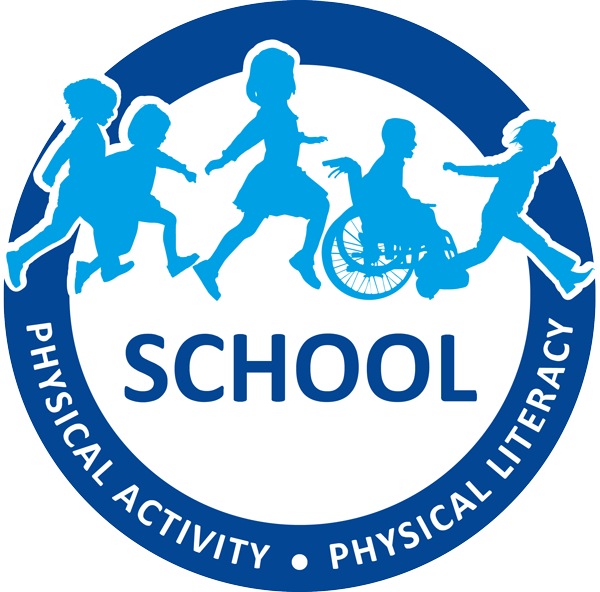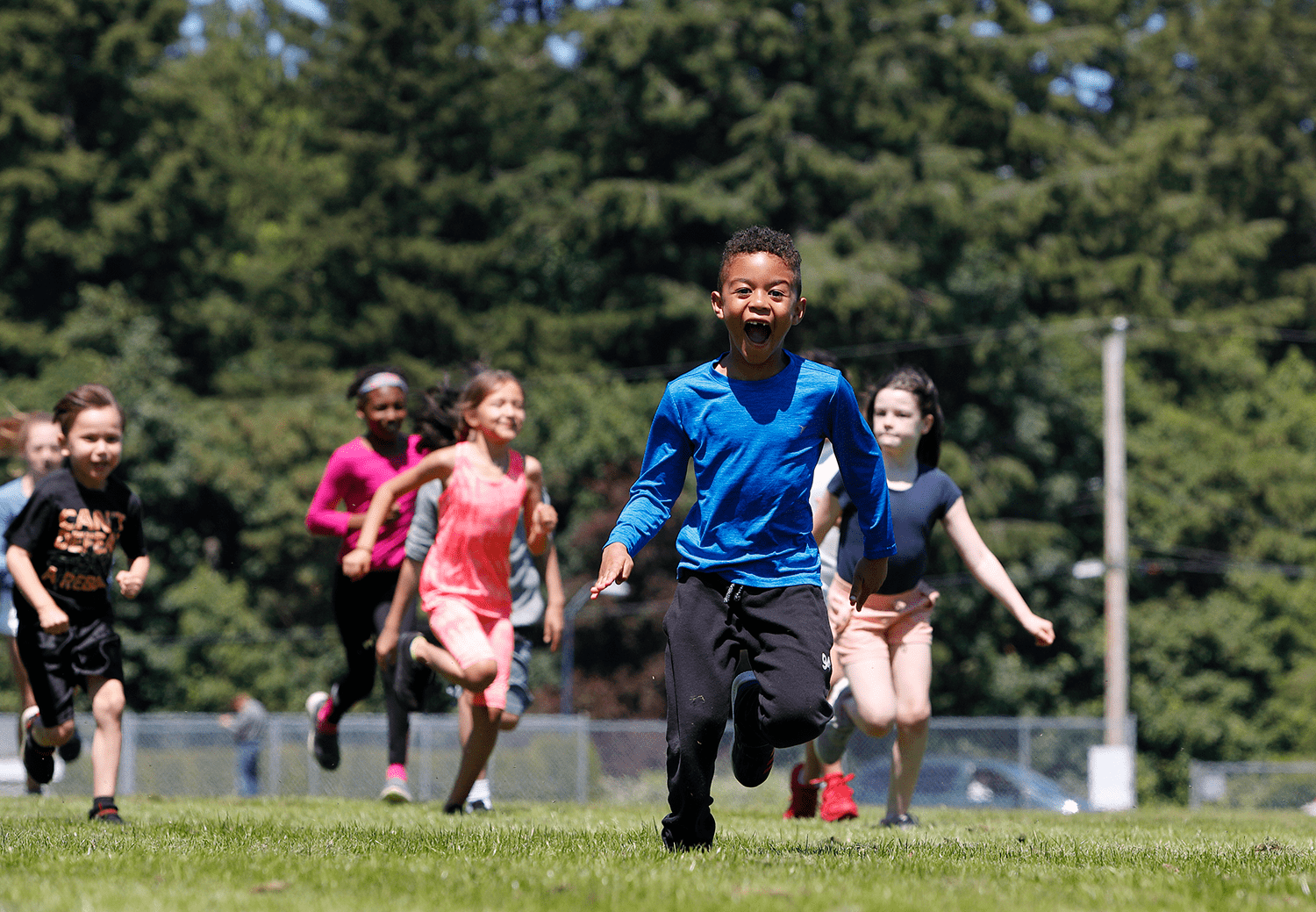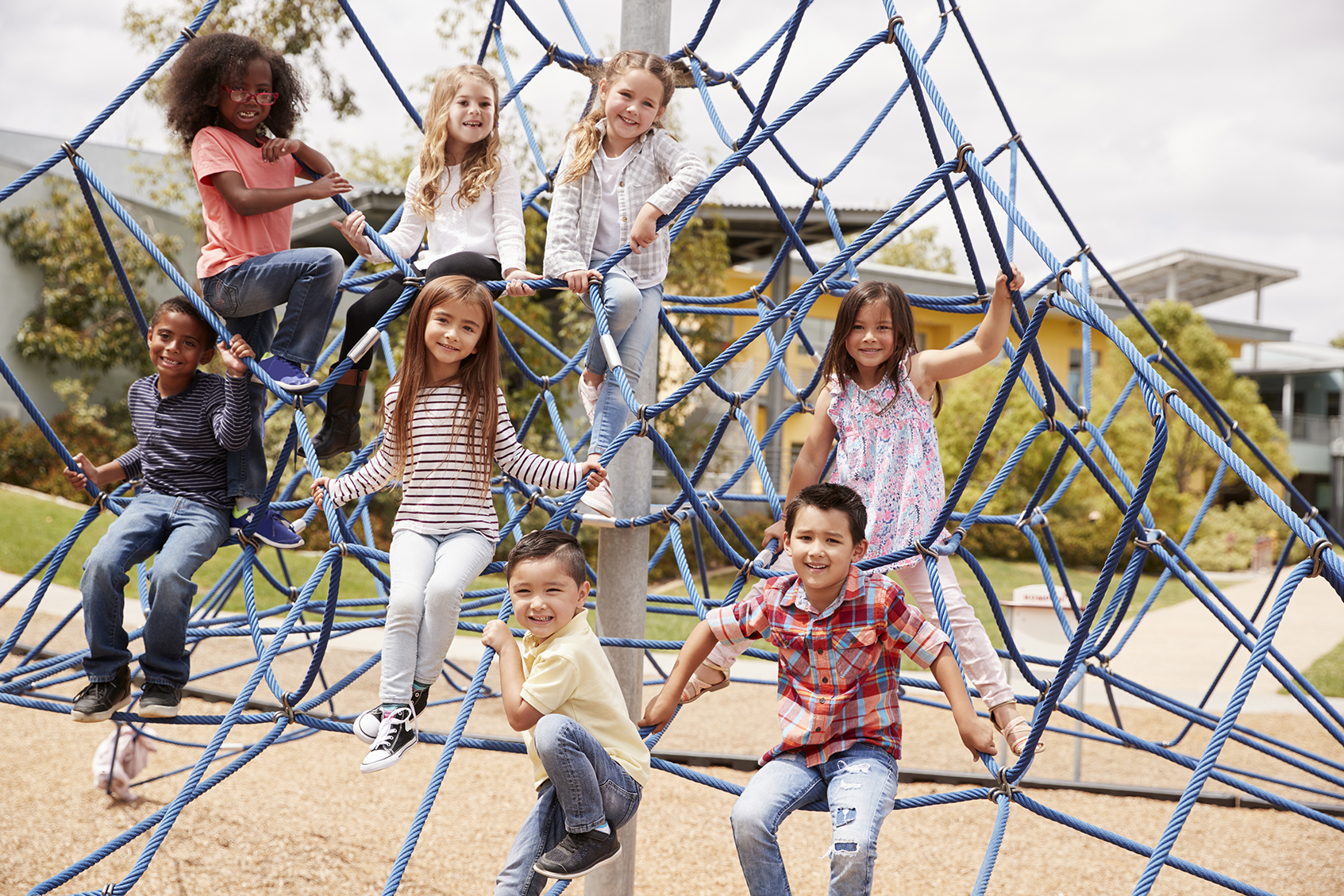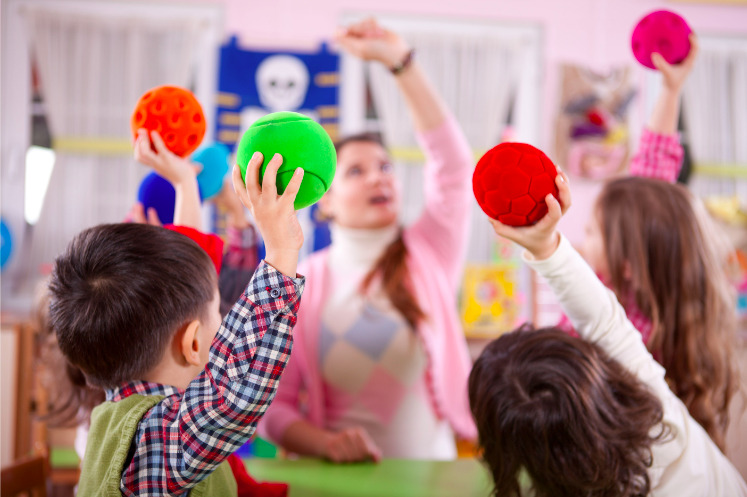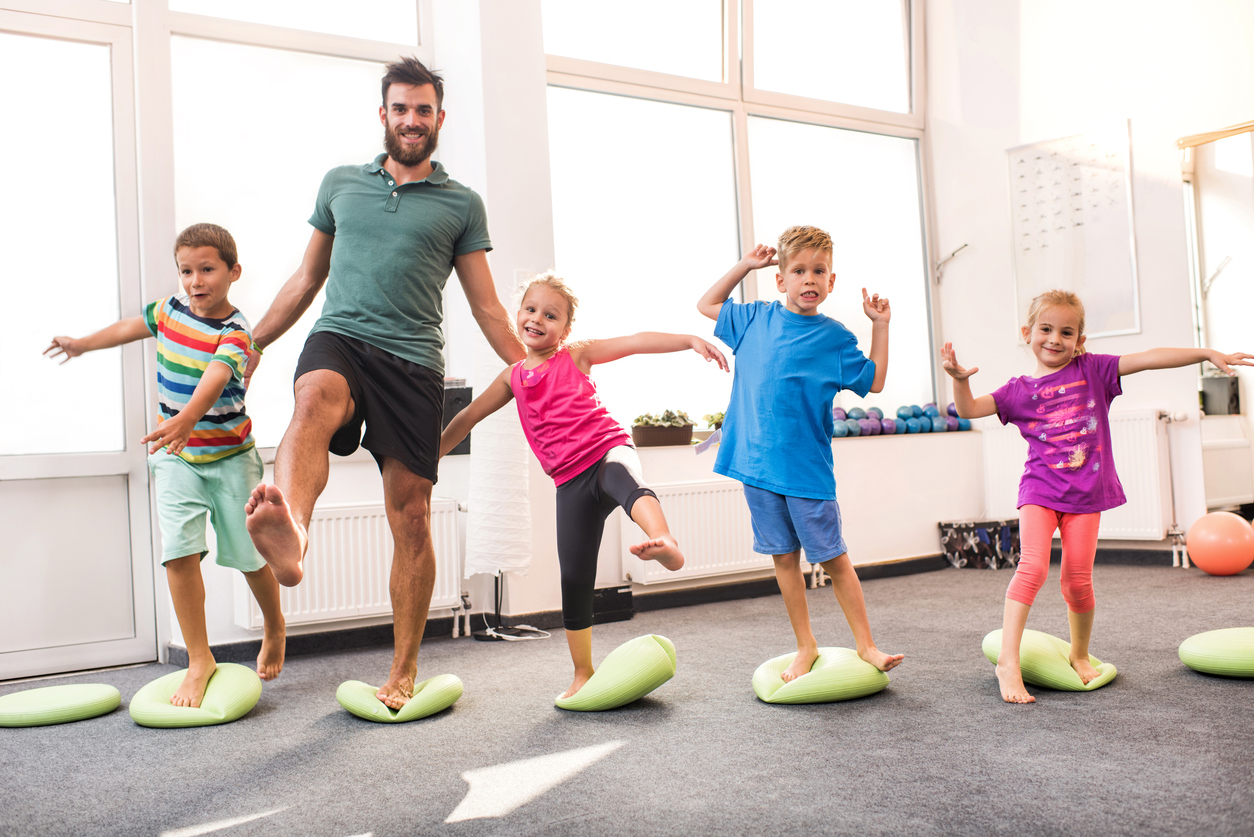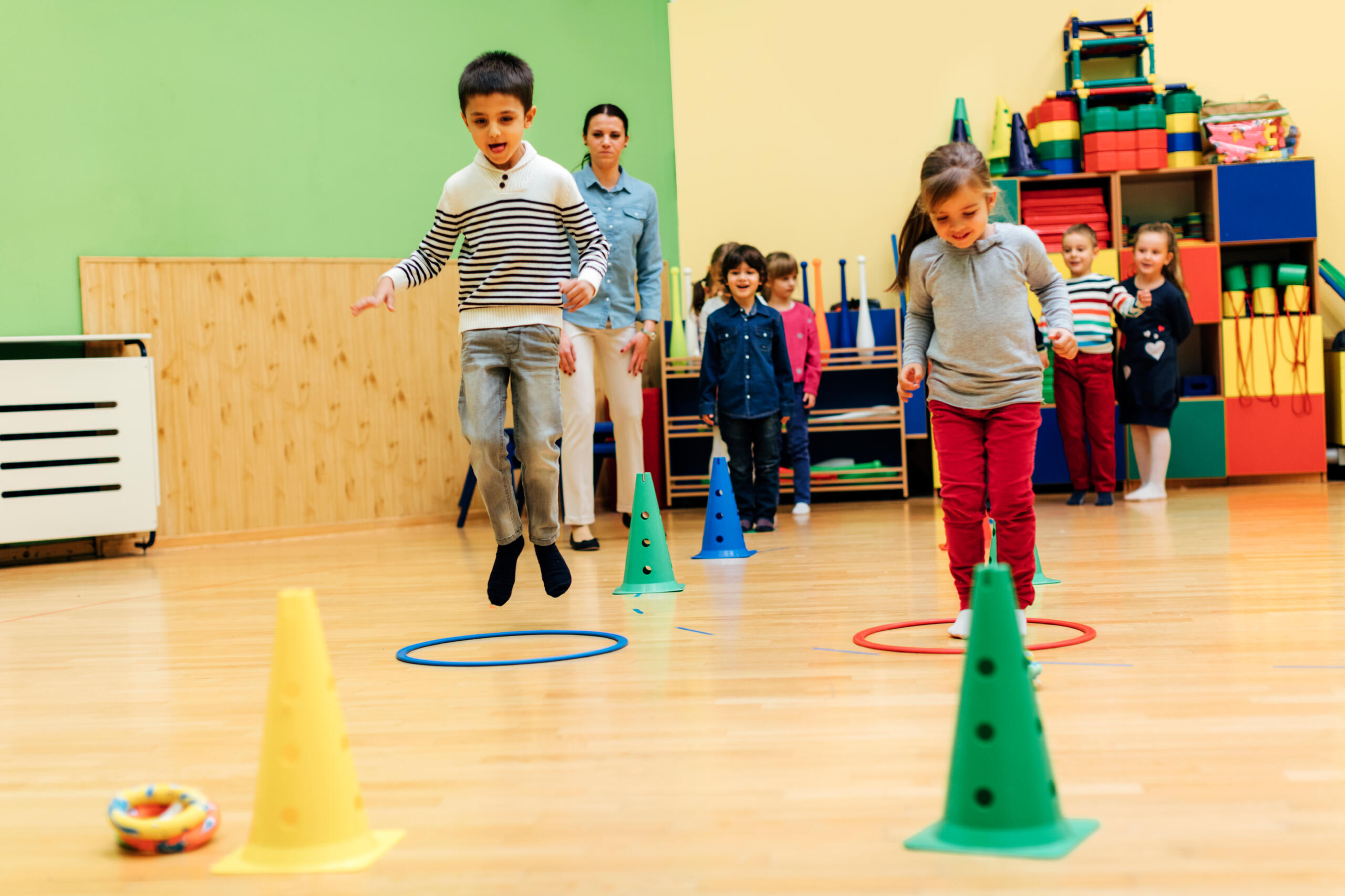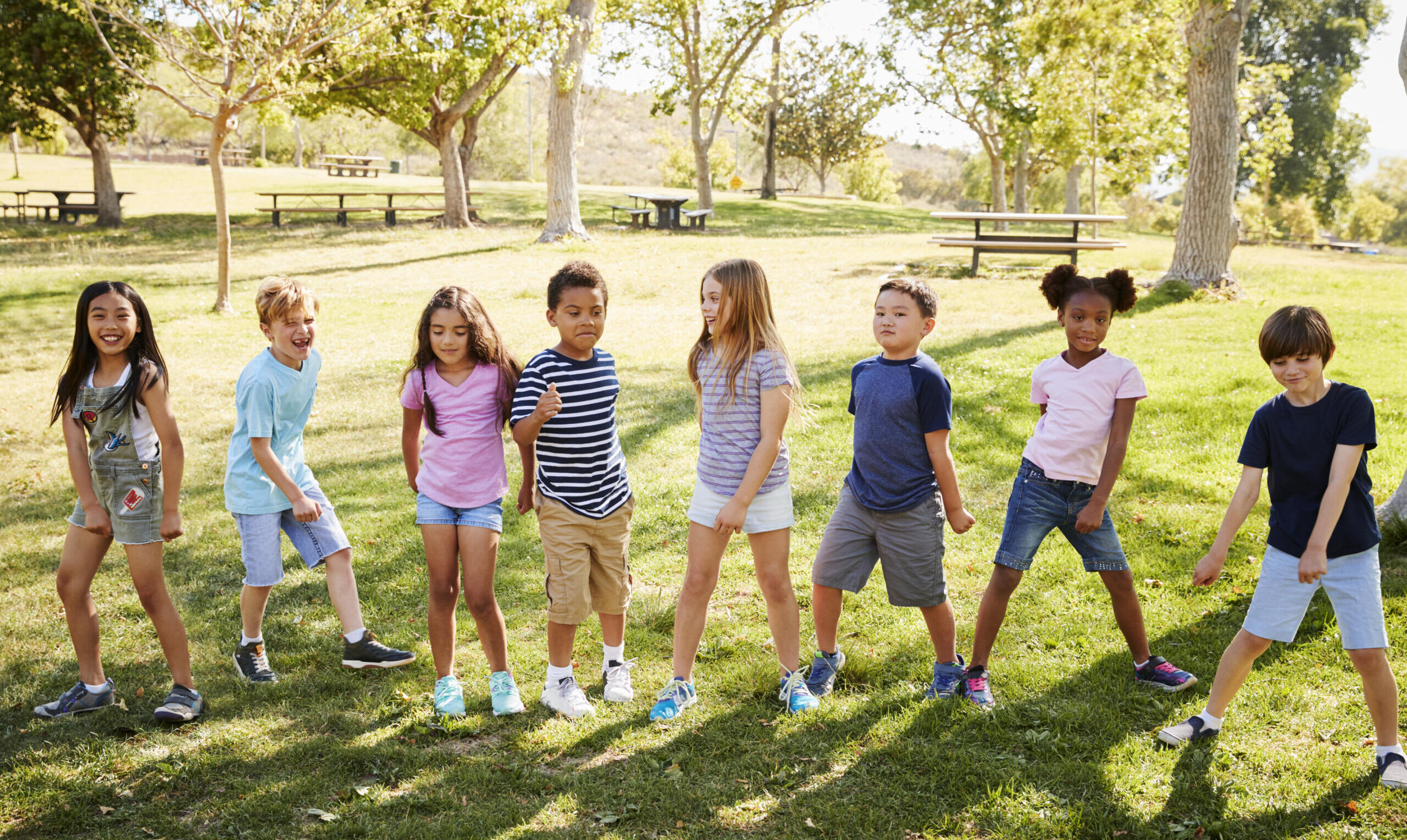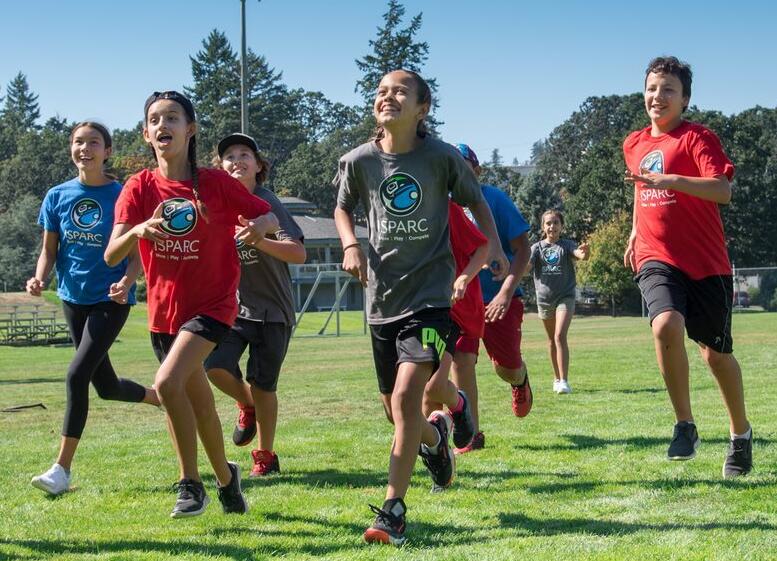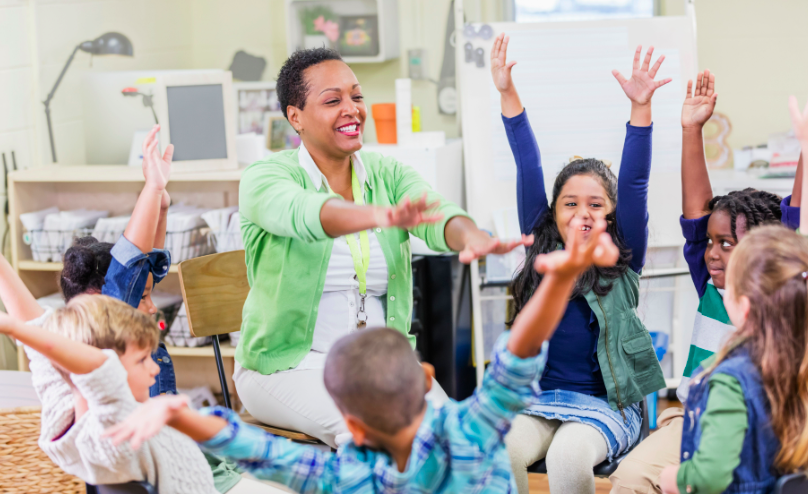Are you looking for engaging and interactive activities that will keep your students excited and moving? Try these three fantastic beanbag activities available on PLAYBuilder. The best part? These activities require minimal equipment as beanbags are likely already available in your school!:
Beanbag Jump: Mastering Horizontal Jumping
Beanbag Jump is an exciting activity that helps students improve their horizontal jumping skills. You only need a beanbag for each participant and a marked line to set the stage for excitement. Here’s how it works:
Instructions & Cues:
- Participants jump as far as they can while staying on their feet and mark their landing spot with a beanbag.
- They return to the starting position and attempt to jump further than their beanbag marker.
- If they succeed, they place the beanbag at their new furthest position and keep challenging themselves.
- Encourage proper jumping form, including bending knees, swinging arms, and landing softly.
Beanbag Hop Relay: Hopping Fun in Teams
Prepare for some hopping fun with the Beanbag Hop Relay! This activity promotes teamwork, balance, and coordination, turning students into hopping champions. Here’s how to set up the relay:
Instructions & Cues:
- Divide participants into teams of three or four.
- Scatter beanbags/balls on one side of the gym to represent the “riverbank.”
- Set up the “burrow” on the other side.
- Create “lily pads” using poly spots or hoops in the middle for resting spots.
- Participants hop on one foot from the burrow to the riverbank, grab a beanbag, and hop back to the burrow.
- Use poly spots/hoops as resting spots if needed, and consider adding variations like changing hopping legs or introducing a tagger for more excitement.
Beanbag Balance Relay Race: Test Your Balancing Skills
The Beanbag Balance Relay Race adds an exciting twist to the classic relay race by incorporating beanbags and challenging various body parts for balancing. This activity enhances students’ balance and concentration, making it a great addition to your repertoire:
Instructions & Cues:
- Organize participants into teams of three and line them up on the end line, each with a beanbag.
- Instruct the first person in each line to balance the beanbag on a specific body part (shoulder, back, stomach, finger, etc.).
- On the cue “Go,” they move to the other end of the line and back, tagging the next person in their group.
- If the beanbag drops, they pick it up and continue. While waiting, they can practice balancing the beanbag on the chosen body part.
- After each round, choose a new body part for balancing and keep the relay going.
These activities guarantee loads of fun and help students develop important fundamental movement skills, coordination, and teamwork. Best of all, you can easily implement them with your school’s beanbags. So, let the beanbag adventures begin!
Get PLAYBuilder today (free for B.C. educators!) and explore more interactive activities to keep your students engaged and active.
